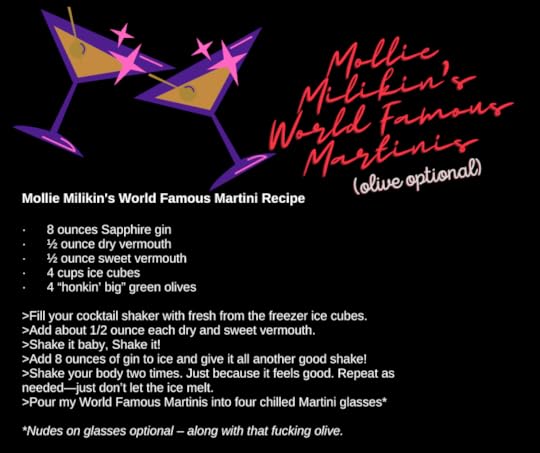Peter Interland's Blog
March 24, 2022
Thank You!
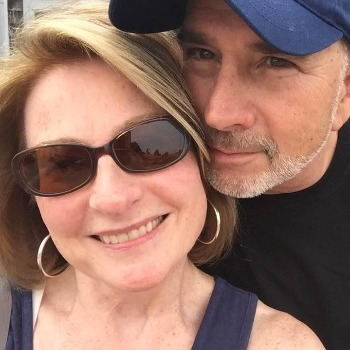
Hi guys. Just a quick note. First and foremost, Laurie and I want to thank you for all you've done to help give Dying to Get In life. We appreciate your support.
Currently I'm heads down working on a new novel that is part of a four book series. I'm hoping to be able to publish the first book sometime in early 2023. Apologies to the cozy mystery genre fans in advance because this will be straight up science fiction with lots of highly unusual and unique twists. I promise it will be like nothing you've ever seen or read before. No more about this WIP for now. I will be looking for Advance Copy Readers sometime this fall. If you are a sci-fi fan, and you’d like to be a member of my ACR team, please email me. For those of you who have not joined the DTGI email list, please do!
Like many of you, our hearts are with the Ukrainian people. We all hope that this will come to a peaceful resolution that will stop the loss of innocent lives on both sides of this conflict. It's tragic to think so many young people, including young Russian soldiers, are dying for no reason but for a maniacal power-hungry monster in the Kremlin.
I intend to do an interview with Estelle, but she's been elusive. She says she’s not ready to spend any quality time with me right now—and I’ve got my plate full at the moment—so this will have to wait.
One last big request.
If you have the time to give the book an honest review on Amazon, Laurie and I would greatly appreciate that. It's extremely important in the world of publishing today, especially for independent authors, to get quality reviews on Amazon. In Amazon’s world, reviews are the best indication they can get, in addition to sales, about the quality of the book. These indicators improve the book’s visibility so that more potential readers will see that it exists. Without massive amounts of advertising dollars to support a sales effort, reviews are critical mass for the success of any indie author. Thanks in advance for all of you who have that on your back burner of things to do. And thanks again from the bottom of our hearts to all of you who have already reviewed Dying to Get In. We love your kind words—and we love you!
Peace, love, and understanding,
—Peter & Laurie
March 7, 2022
Dying to Get In Reviews
What readers are saying about Dying to Get in. Get your Kindle or order your paperback edition today! #cozymystery#writerslift#Newbooks#readerscommunity#WritingCommunity
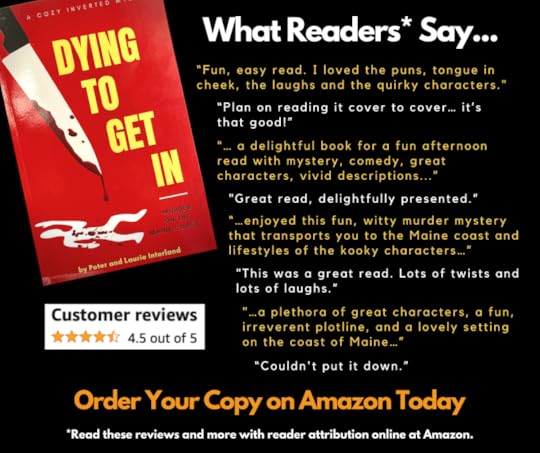
February 9, 2022
Win a Dying to Get In Kozy Kit!

Join the Dying to Get In email list for a chance to win a branded coffee mug, two bookmarks, and a signed paperback. Enter to win now!
February 6, 2022
On Target: Beijing Olympics Biathlon FAQs
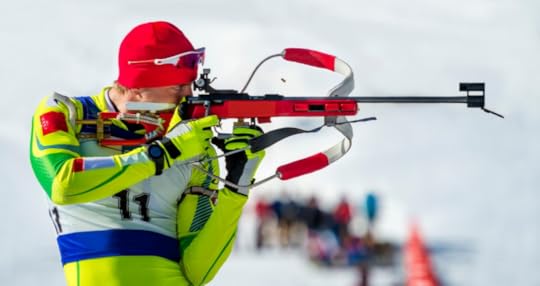
We asked Detective Travis Shea, one of Dying to Get In’s favorite characters and former biathlon competitor, to give us his take on this year’s Olympic games. A native Mainer from Aroostook County and a proficient cross-country skier and shooter, Travis considered trying out for the Olympic biathlon squad while he was attending high school at Maine School of Science and Mathematics (MSSM) in Limestone, Maine. Nearby Fort Kent was the site of one of the two North American venues in the 2010-11 Biathlon World Cup. Based on his background in this unique sport and his experience in criminal justice, Travis chose to focus this interview on the firearms, shooting skills, and equipment required to compete.
On that note, we turn this article over to Travis.
Q. What kind of rifles do they use in Olympic biathlon events?A. Both men and women use high-tech .22-caliber rifles with four 5-round magazines. The rifle weighs about 7.59 pounds and the barrel length is 20 to 22 inches, and the overall length is runs around 39 inches. Most competitors use Anschutz 1827 F Bionic rifles. While the rifle uses fixed and snow sights, neither sight is magnified.
Q. How big is the target and how far away is it?A. Five targets for both standing and prone shooting positions on the range are placed 50 meters away. But the size of each target for prone shooting is only 1.8-inches (4.5-cm)—about the size of a silver dollar. When the skier stops to shoot standing up, the target size is 4.5-inches (11.5-cm)—about the size of a softball.
Q. Why do some of the biathlon athletes take penalty loops?A. After arriving at the range, each shooter must successfully hit each one of the five targets. If the shooter misses any one of the targets—with all rounds loaded from the gun’s magazine—they must take another round and manually place it in the breach and try again. They get up to three manually loaded rounds to clear any remaining targets missed. After eight shots, the competitor must do a 150-meter penalty lap for each missed target. Penalty laps take about 20-seconds to complete and can make or break the competitor’s chance of winning the race.
Q. Anything special about the .22 caliber ammo used?A. Like every other element of a biathlon and the equipment used in competition, the ammunition must conform to specifications set by the International Biathlon Union (IBU). The bullets have to be lead or a lead alloy, weigh between 2.55 and 2.75 grams (39.35 to 42.43 grains) and have a maximum muzzle velocity of 1181 fps.
Q. When was the biathlon event added to the Winter Olympics?A. The first time the event appeared was in the first Winter Olympics held in Chamonix, France in 1924. It was a demonstration event and called “military patrol” back then. The Olympics had a different name back then, too—“Winter Sports Week.” The biathlon was included as a demo event in 1928, 1936, and after WWII in 1948. It became an official part of the games in the 1960 Winter Olympics at Squaw Valley, California and every Olympics since then.
Q. Anything you’d like to say about Team USA’s biathlon chances?A. Those Nordic countries are tough to beat in this sport, but our athletes are continuing to improve. So, I’m saying we have a chance to medal. I’ll continue to watch along with everyone else to see how we do in Beijing. I want to give a big Maine shout out to Clare Egan from Cape Elizabeth, Maine! Clare finished 7th in the biathlon mixed relay! You go girl! Congrats!
Q. Finally, any truth to the rumor that you and Betsy Palmer are dating?A. Oh, sorry—but I just got called in. Got to go solve a crime. Thanks. Go USA! Bye…
January 17, 2022
January 11, 2022
WTF is a Cozy Inverted Mystery?

Most of us know what a murder mystery is all about. Someone is dead and the investigators, along with the reader, get busy trying to solve the crime and identify the killer. Your basic whodunit. The Cozy mysteries subgenre—a warmer, softer, fuzzier whodunit—has grown in popularity over the years. But with the recent release of Dying to Get In, many people have asked me what the hell—to use a less profane phrase—is a cozy inverted mystery?
Let’s start with inverted mysteries and leave the cozy part for later.
The truth is, you may already be familiar with inverted mysteries, even if you were unaware what this format was called when you saw or read one. I will provide some examples in this article.
As opposed to a whodunit, inverted mysteries are often referred to as a “howcatchum” or a “howdunit.” That’s because in an inverted mystery the perpetrator of the crime is known right from the very start—vs. the climax—of the story. You know the who, then you learn the how, and maybe the why. Sometimes, it might even be the if they do it. You might ask, “Where’s the fun in that?” Great question.
Inverted Mysteries You May Know“For some writers the use of an inverted form is a chance to experiment with the structure of a mystery story and show that you can still craft a viable puzzle even if you know the killer’s identity,” says Mysteries Ahoy in their Five to Try: Inverted Mysteries article. “Others like to use the form to explore the psychology of killers or their perspective on the cat-and-mouse game of detection. Sometimes these books are light-hearted and comedic with the killer’s plans either coming to nothing or being turned back on the killer themselves. Others are dark, gritty and drenched in noir-style.”
Wikipedia's piece on "inverted detective" stories cites several early examples of the inverted mystery subgenre including Malice Aforethought, written in 1931 by Anthony Berkeley Cox, Freeman Wills Crofts's The 12:30 from Croydon (1934), and the 1952 BBC television play Dial M for Murder by Frederick Knott (later adapted in 1954 as a theatrical film by Alfred Hitchcock). In the latter, “Tony Wendice outlines his plans to murder his wife Margot in the opening scenes, leaving the viewer with no questions about perpetrator or motive, only with how the situation will be resolved.”
The article went on to list several popular TV shows that frequently featured episodes “that employed the ‘howcatchum’ format” including some episodes of Diagnosis: Murder, Monk, Criminal Minds, Columbo, Law & Order: Criminal Intent, and the British television crime series Luther.
Considered a cult classic, Kind Hearts and Coronets, a 1949 British black comedy film loosely based on the novel Israel Rank: The Autobiography of a Criminal (1907) by Roy Horniman. The main character, Louis D'Ascoyne Mazzini “is the son of a woman disowned by her aristocratic family for marrying out of her social class. After her death, Louis decides to take revenge on the family and take the dukedom by murdering the eight people ahead of him in the line of succession to the title.”
Why Ask Who When You Can Wonder Why?
“Reverse whodunits are rare, and for good reason—it's not easy to make a book engaging when the biggest secret is revealed on page one,” says Kelsey McConnell, Reverse Whodunit Books That Put You in the Mind of a Murderer, published Aug 31, 2021 in Murder & Mayhem. ‘However, if you have the luck of stumbling across one of these backwards tales, you can rest assured that the drama and twists embedded in the hows and whys of it all will make the spoiler worth it. Why wonder who committed a crime, when you can wonder why?”
So, you love to solve mysteries. Figure out who the killer is before the lead dick in your story does. Roger that. Who doesn’t like to play the smart sleuth? But, just maybe it’s time to try something new, in a fun fast, read that takes about as much time to enjoy as it does to binge watch most of your favorite cable programs like Only Murders in the Building or Ted Lasso.
“If you've read so many mysteries that the formula has started to feel predictable, this subgenre is a great way to step out of a funk,” says McConnell. “But where do you start?”
Explore the Subgenre in Cozy Comfort
My recommendation is—shocker—to start with Dying to Get In. I created this story to entertain you. To amuse you. And without being overly dramatic, to provoke you. You may find yourself laughing unexpectedly. In fact, I would bet on it. You may get a brief glance at the dark side, but I promise to lead you back to the light. And, you will laugh at that too.
What might surprise you most is how Dying to Get In might challenge your thinking about what you would do––what length you would go to––to protect the one you love most.
The “cozy” part of DTGI exists in the overall feel and tonality of the story. Like Only Murders, this story is primarily comedic punctuated by dramatic moments and brimming with likable quirky characters, several unexpected twists, and a thoroughly satisfying conclusion.
I hope that you will enjoy reading Dying to Get In as much as I enjoyed writing it.
January 3, 2022
Dying to Get In Pre-orderAvailable on Amazon Kindle
It gives me great pleasure to announce the launch of Dying to Get In. I created this book to entertain you. To amuse you. And without being overly dramatic, to provoke you. You may find yourself laughing unexpectedly. In fact, I would bet on it. You may get a brief glance at the dark side, but I promise to lead you back to the light. And, you will laugh at that too. What might surprise you most is how Dying to Get In might challenge your thinking about what you would do––what length you would go to––to protect the one you love most. I will be offering free signed paperback copies of the book to people who join my email list in a promo to be announced at a later date. I sincerely hope that you will read and enjoy the Dying to Get In Kindle edition and leave an honest review on Amazon. Happy New Year and thank you! Peter
December 20, 2021
Free Dying to Get In Bookmarks
Anyone want a couple of these? Join my email list and add your physical address in the comments section at www.peterinterland.com/contact Already on the list? Just re-enter your name and add your addy in the comment box. I’ll snail mail them right out!
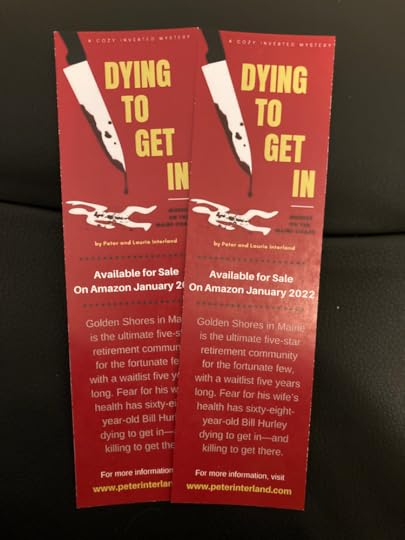
October 14, 2021
Coming Soon ...
Check back for updates ...

Welcome to my blog post. Check back soon.
Want A Signed Copy of Dying To Get In?
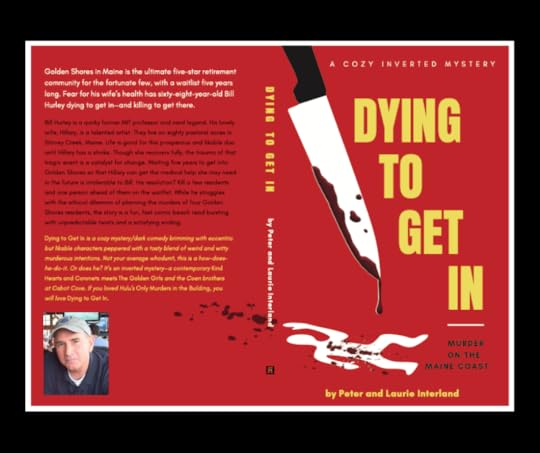
Want a signed copy of Dying to Get In? Join my email list for upcoming news, events, and details on how you can enter to win a signed copy. Learn more now.

Welcome to my blog post. Check back for updates, news, and more.

